Abstract
The registry of digestive tract tumours established for the department of Cote d'Or (France) was used to study the epidemiological characteristics of large bowel cancer subsites for the period 1976-1983. Age standardised incidence rates for colon cancers were 18.9/100,000 for men and 14.2/100,000 for women. The corresponding rates for rectal cancers were 18.4/100,000 and 10.2/100,000. The sex ratio for right colon cancer (caecum, ascending colon, hepatic flexure, transverse, splenic flexure) was close to 1 and did not change with advancing age, while that for the left colon (sigmoid, descending colon) showed a male excess after 65. For rectal cancer (rectosigmoid junction, rectal ampulla) the male predominance was more marked and occurred earlier, after 55 years of age. There was no significant variation in incidence between rural and urban areas for the different sublocalisations. In males the risk was high in the highest social classes for left colon cancer (p less than 0.01), and among farmers for rectal cancer (p less than 0.01). The risk of left colon cancer in males increased with the comfort of housing (p less than 0.01), but this marker of social class had little influence on incidence for the other localisations in males, or for any localisation in females. No significant variation was found with education. The incidence of colon cancer tended to increase over the 8 years of study. The variations were significant for left colon cancer. For rectal subsites cancer incidence decreased in women (p less than 0.05). The observed differences suggest differences in the aetiological factors within large bowel cancers. Therefore right colon cancer, left colon cancer and rectal cancer should be considered separately in epidemiological analytical investigations.
Full text
PDF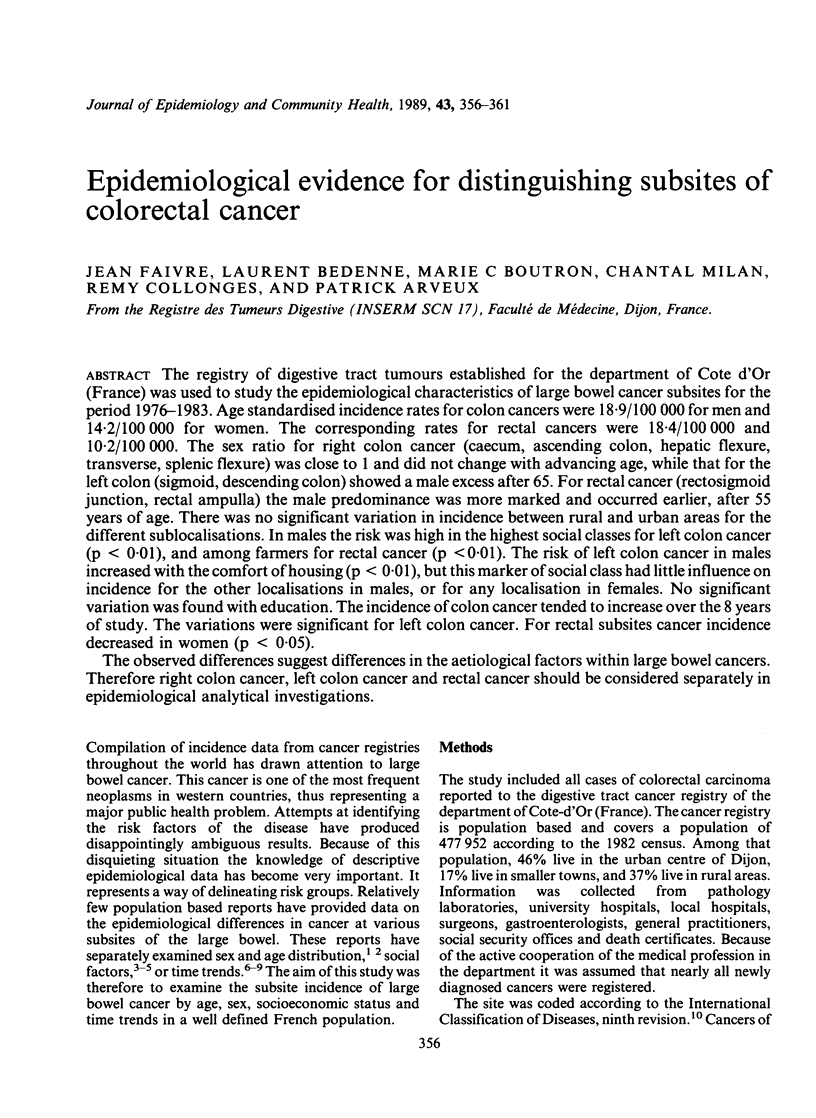
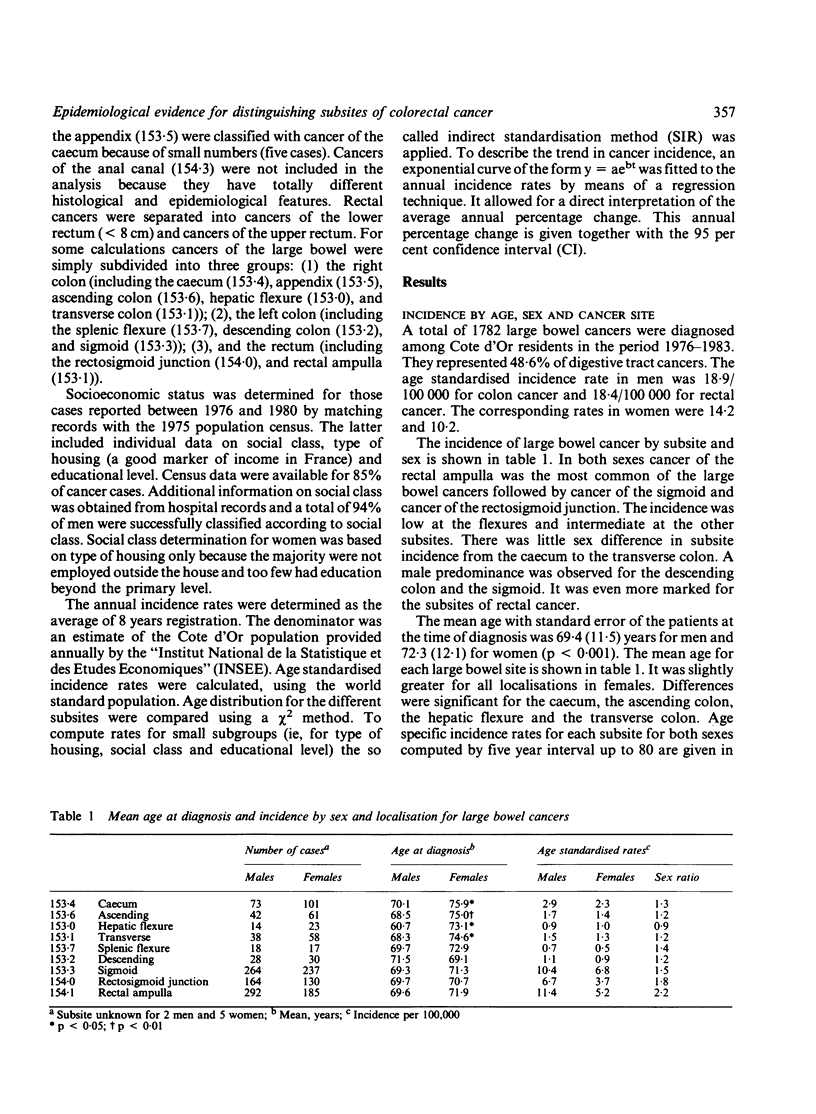
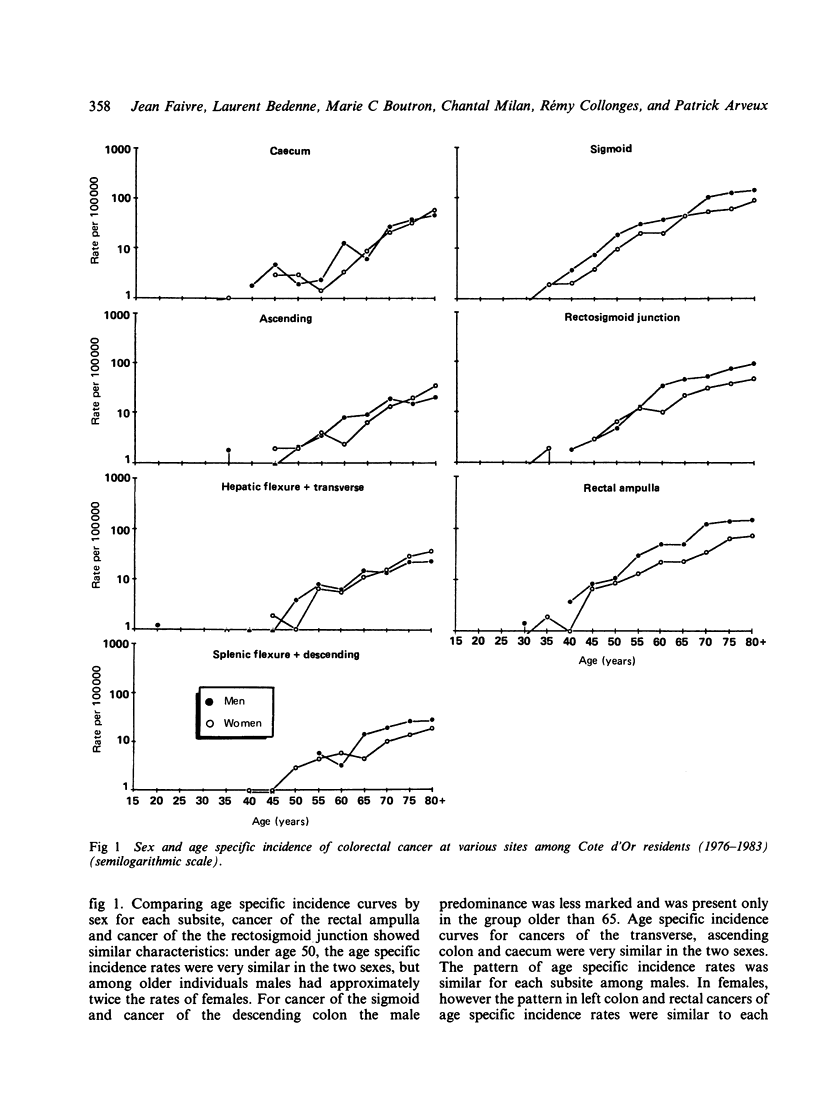
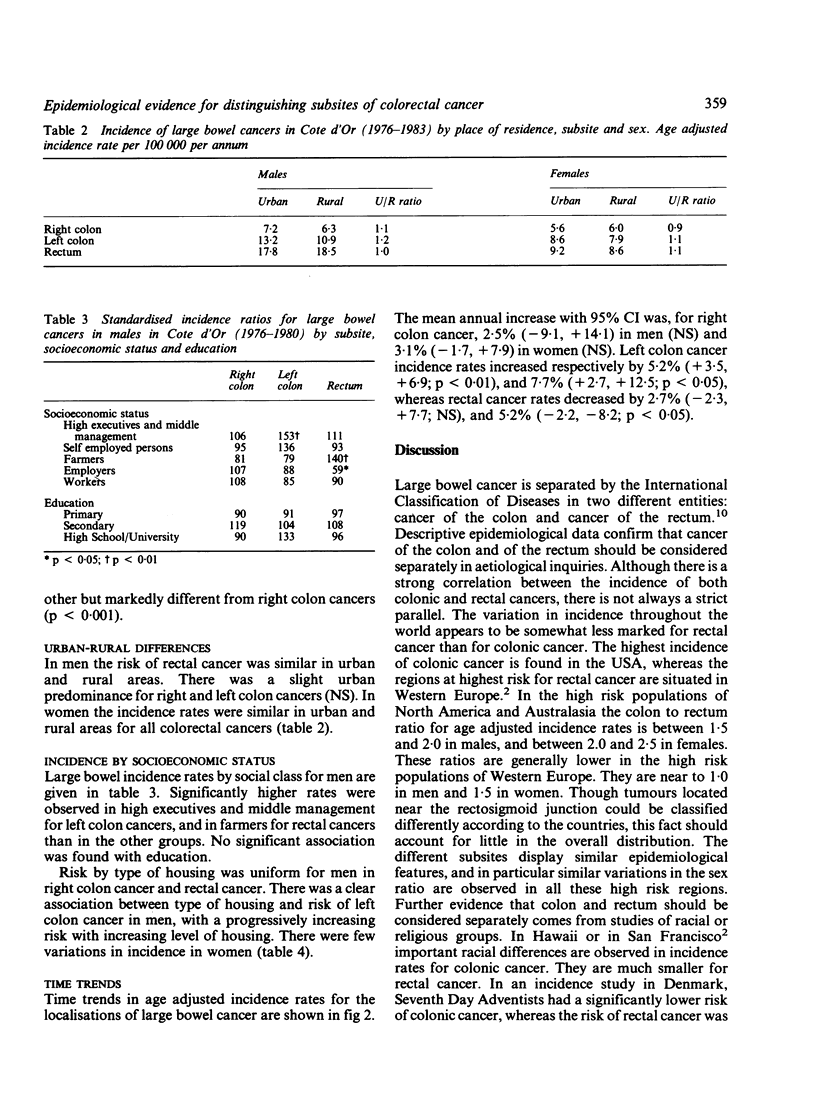

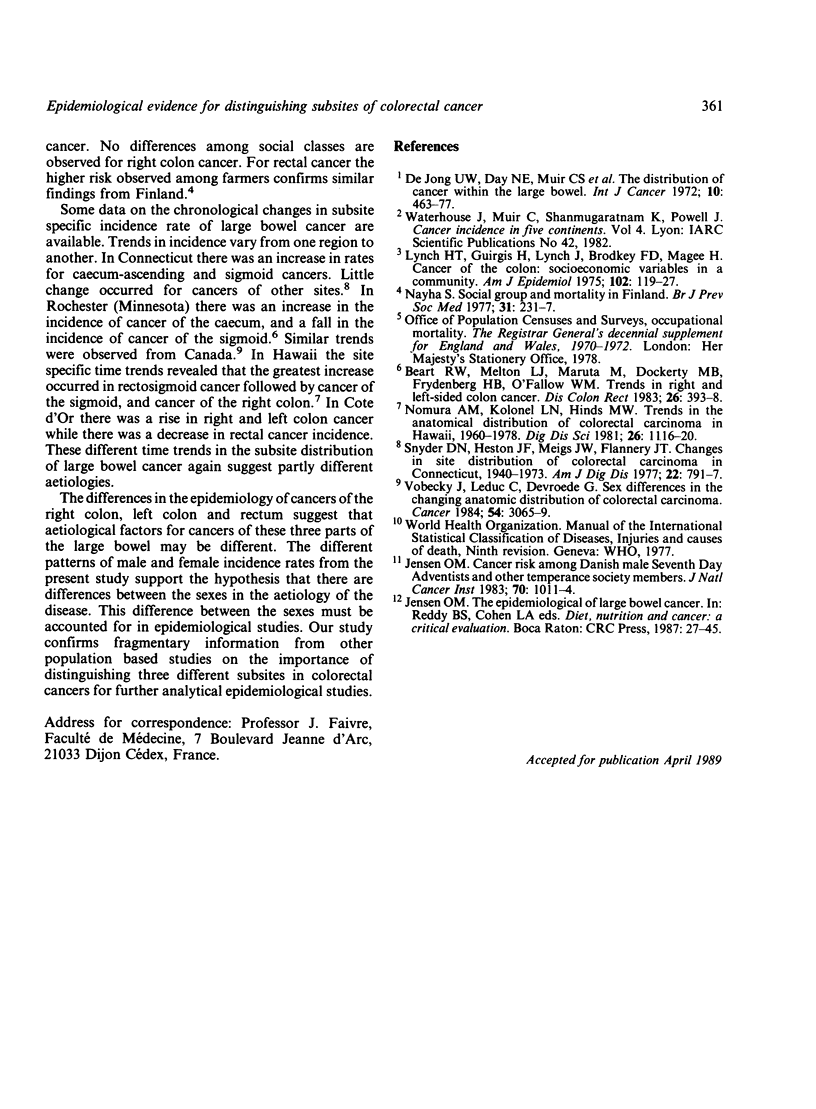
Selected References
These references are in PubMed. This may not be the complete list of references from this article.
- Beart R. W., Melton L. J., 3rd, Maruta M., Dockerty M. B., Frydenberg H. B., O'Fallon W. M. Trends in right and left-sided colon cancer. Dis Colon Rectum. 1983 Jun;26(6):393–398. doi: 10.1007/BF02553382. [DOI] [PubMed] [Google Scholar]
- Jensen O. M. Cancer risk among Danish male Seventh-Day Adventists and other temperance society members. J Natl Cancer Inst. 1983 Jun;70(6):1011–1014. [PubMed] [Google Scholar]
- Lynch H. T., Guirgis H., Lynch J., Brodkey F. D., Magee H. Cancer of the colon: socioeconomic variables in a community. Am J Epidemiol. 1975 Aug;102(2):119–127. doi: 10.1093/oxfordjournals.aje.a112139. [DOI] [PubMed] [Google Scholar]
- Nomura A. M., Kolonel L. N., Hinds M. W. Trends in the anatomical distribution of colorectal carcinoma in Hawaii, 1960-1978. Dig Dis Sci. 1981 Dec;26(12):1116–1120. doi: 10.1007/BF01295978. [DOI] [PubMed] [Google Scholar]
- Näyhä S. Social group and mortality in Finland. Br J Prev Soc Med. 1977 Dec;31(4):231–237. [PMC free article] [PubMed] [Google Scholar]
- Snyder D. N., Heston J. F., Meigs J. W., Flannery J. T. Changes in site distribution of colorectal carcinoma in Connecticut, 1940-1973. Am J Dig Dis. 1977 Sep;22(9):791–797. doi: 10.1007/BF01694509. [DOI] [PubMed] [Google Scholar]
- Vobecky J., Leduc C., Devroede G. Sex differences in the changing anatomic distribution of colorectal carcinoma. Cancer. 1984 Dec 15;54(12):3065–3069. doi: 10.1002/1097-0142(19841215)54:12<3065::aid-cncr2820541242>3.0.co;2-c. [DOI] [PubMed] [Google Scholar]
- de Jong U. W., Day N. E., Muir C. S., Barclay T. H., Bras G., Foster F. H., Jussawalla D. J., Ringertz N., Shanmugaratnam T. The distribution of cancer within the large bowel. Int J Cancer. 1972 Nov;10(3):463–477. doi: 10.1002/ijc.2910100305. [DOI] [PubMed] [Google Scholar]


